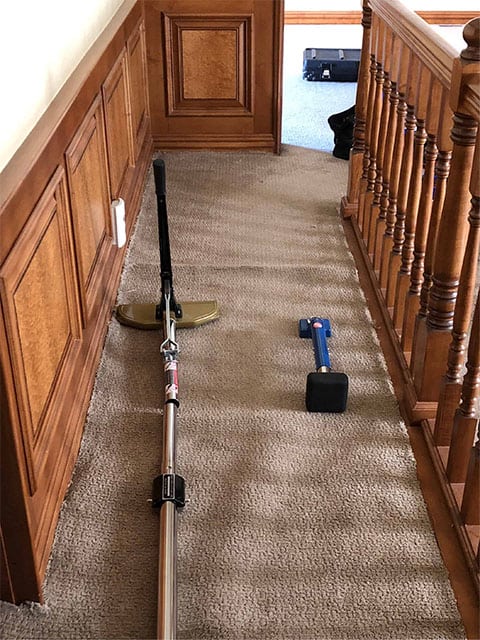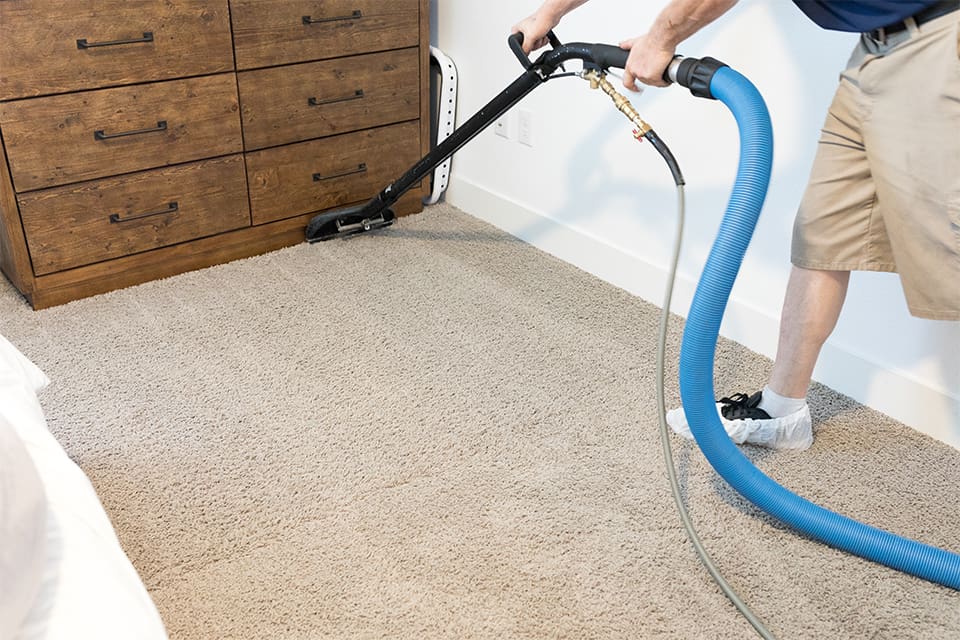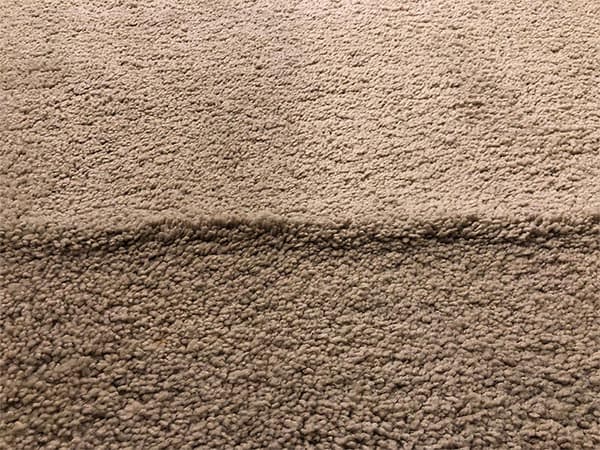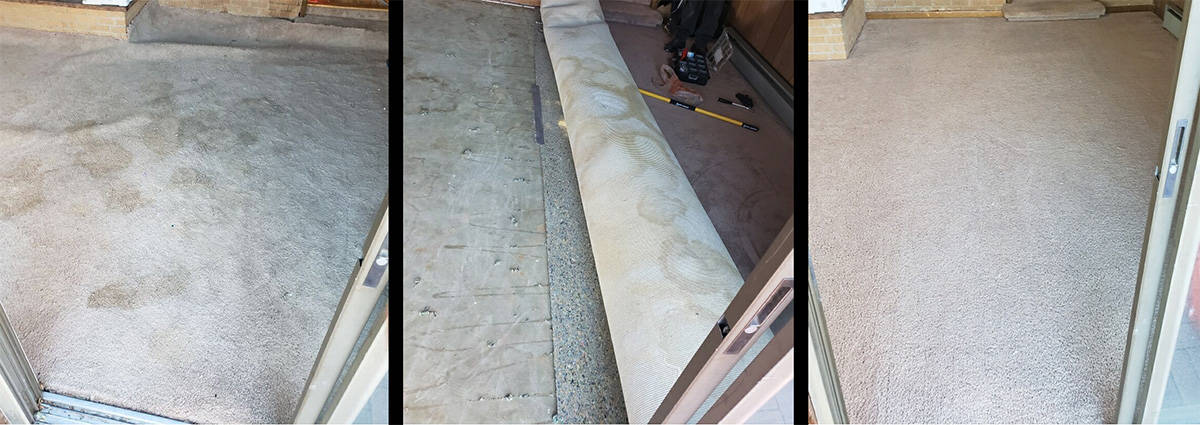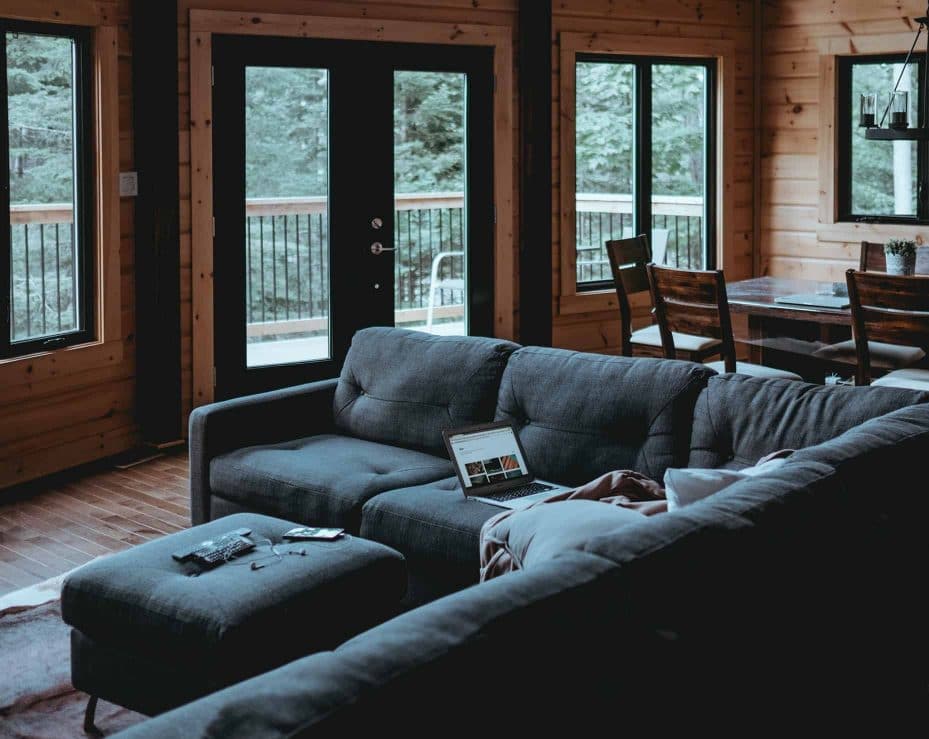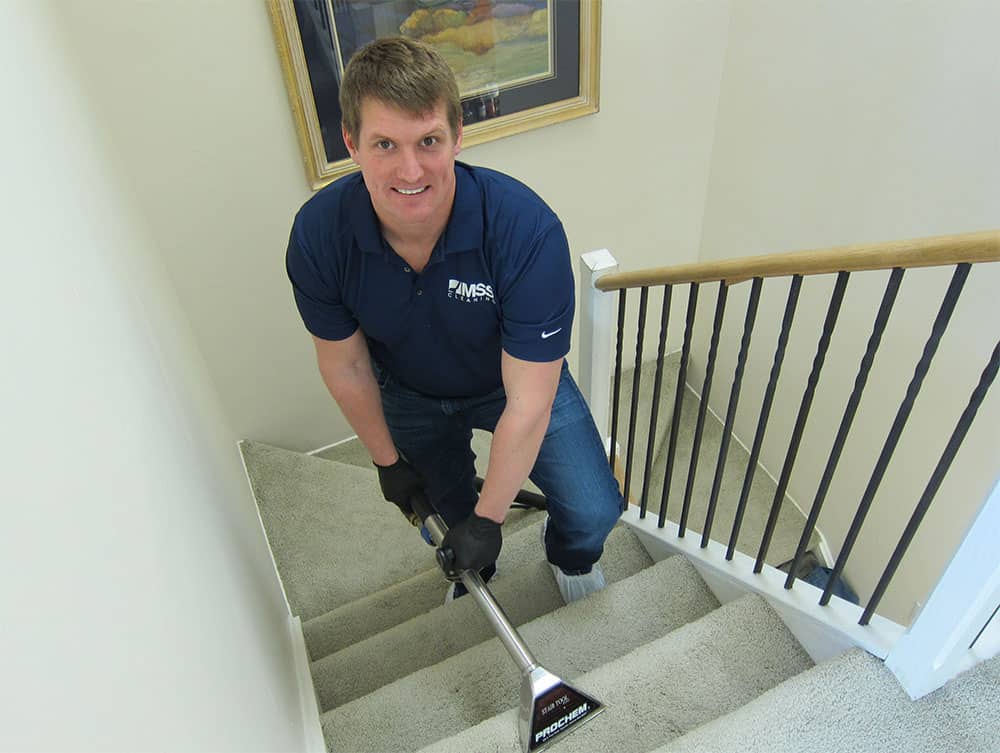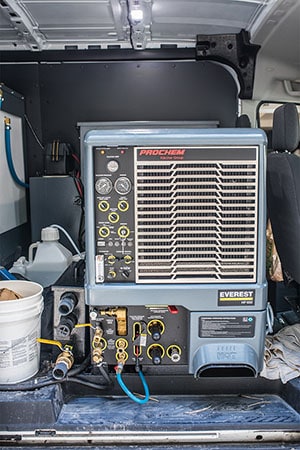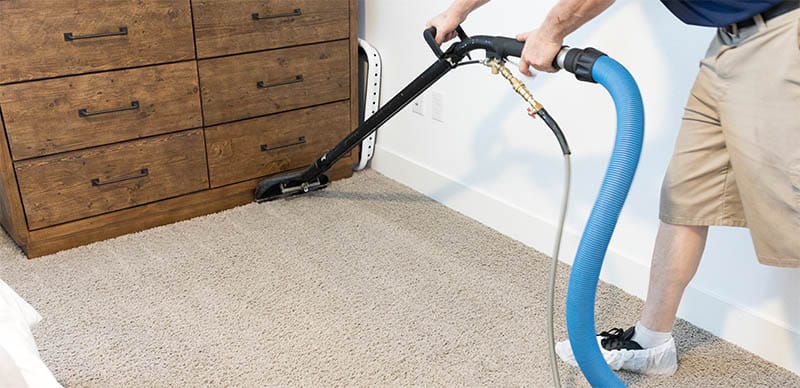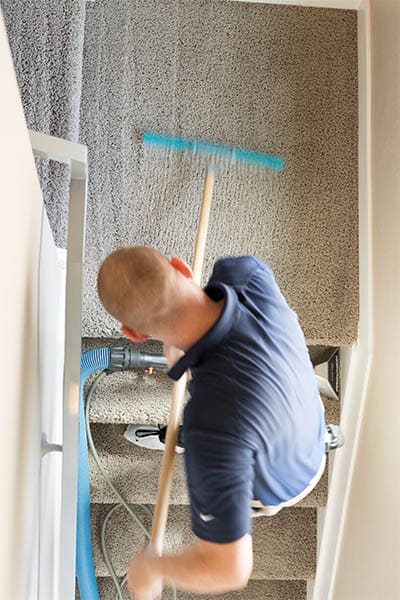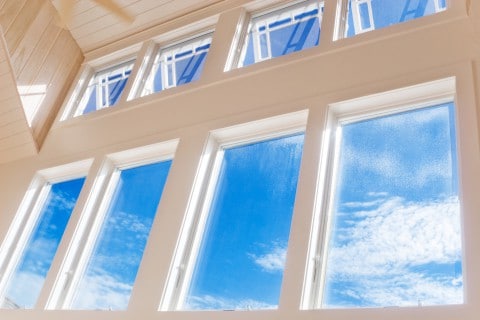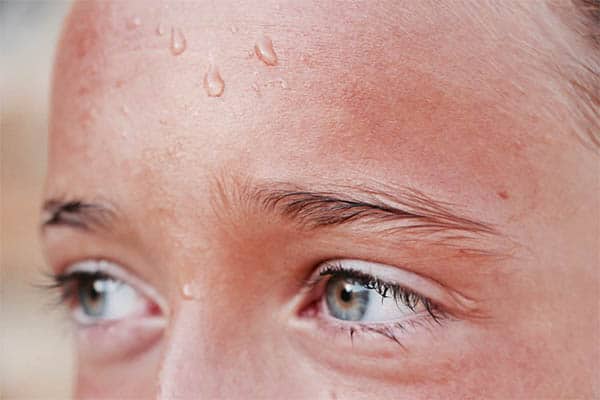How to Get Wrinkles Out of Carpet
How to Get Wrinkles Out of Your Carpet
Learn Why Carpet Wrinkles Happen and How to Repair Carpet Wrinkles

Wall-to-wall carpeting is a comfortable feature found in many homes. Its inclusion can be a nice way to add coziness underfoot throughout a property’s interior.
Carpeting can be selected in a variety of colors, textures, and styles, all working to put a personal stamp on a home’s specific aesthetic. While some carpeting is added to bring an era-specific design to life, other varieties prove to be more functional.
The Benefits of Wall-to-Wall Carpeting in the Home
Those with small children in the home may find their wall-to-wall carpeting to be a lifesaver. As little ones begin crawling or walking, carpeting provides a plush landing space for falls as well as a comfortable place to play.
Similarly, homeowners with pets frequently find this type of carpeting to be a beneficial barrier between paws and pristine wood flooring that just might lie below.
The Appearance of Wrinkles in Carpets
While the many helpful and aesthetically pleasing purposes of wall-to-wall carpeting are quite versatile, the true benefits are only achieved when the carpet has been properly installed and is functioning at its best.
Among an otherwise smooth surface, wrinkles in carpets are easy to spot and highly problematic.
Carpet Wrinkles – More Than Just an Eyesore
At first, a wrinkle appearing in a carpet might only be an eyesore, but eventually, it has the potential to become more of a hazard. Wrinkles in carpets shouldn’t be ignored and knowing how to get wrinkles out of carpet can take the stress and risk out of the situation.
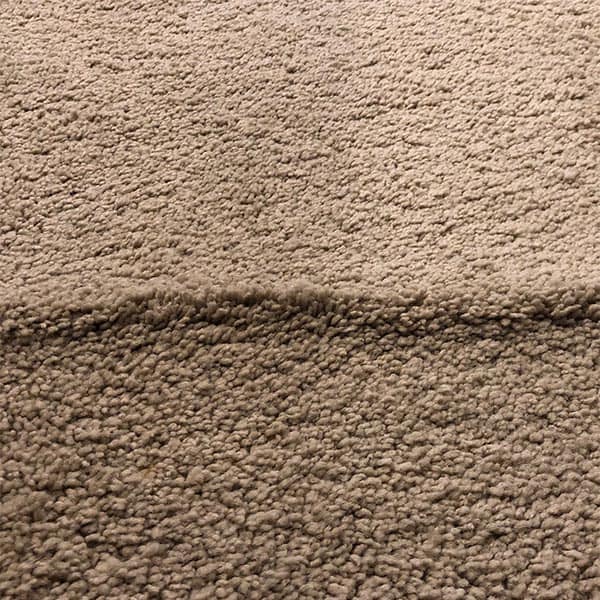
Learning How to Fix Carpet Wrinkles
Learning how to fix carpet wrinkles when the right tools are available, as well as how to get wrinkles out of carpet without a stretcher are both important skills.
A knowledge of these techniques is a good way to keep a home safe and looking great for years to come.
Important Reasons to Fix Carpet Wrinkles Quickly
Wrinkles Present a Tripping Hazard
It may look like nothing more than a small bubble in the center of the room, but with carpet buckling comes with plenty of potential problems attached. Above all, carpet wrinkles can become a tripping hazard in the home—certainly, something to be avoided when safety is a priority.
Buckled Carpet Wears Out Faster
These problematic areas in carpeting are also more likely to wear out quickly as they’ll be in more regular contact with foot traffic. This can eventually lead to a need for expensive repair services or even a full carpet replacement.
Carpet Wrinkles Don’t Disappear On Their Own
Unfortunately, carpet wrinkles don’t just work themselves out over time. Once they’re noticed, they require immediate attention or they’re in the home to stay. Knowing how to get wrinkles out of carpet can save homeowners time, money, and stress.
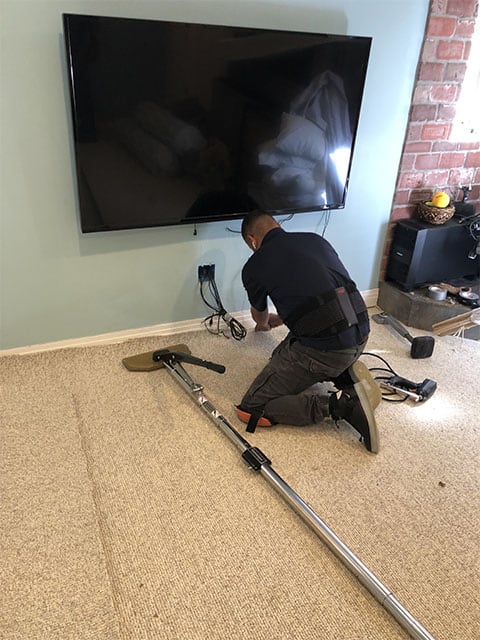
Why Do Carpet Wrinkles Happen?
Before learning how to fix carpet wrinkles, it’s helpful to understand why they occurred in the first place. Understandably, many carpet wrinkles can be linked back to initial improper installation techniques.
Not Installed with a Power Stretcher
A power stretcher is an essential component of carpet installation and in cases where one hasn’t been used, wrinkling is likely after a period of months or years.
Carpeting also requires a significant amount of time to adjust to a home’s core temperature before being permanently set. Wrinkling can also be a result of carpeting laid too fast.
Sometimes, wrinkling happens when the carpet wasn’t initially cut to the proper size. If the ends of the carpet don’t meet the wall at a smooth line, the fabric pushes backward creating a noticeable bubble.
Ultimately, even if a carpet was properly installed, it’s likely that at some point, wrinkles will occur as the carpet endures natural wear and tear from being walked on. Over time, this leads to fibers underneath breaking down and the fabric loosening, causing wrinkles.
How to Fix Carpet Wrinkles with a Stretcher
Gaining access to a power stretcher is step one when it’s time to rid a carpet of wrinkles. These handy tools look like long brooms with a head on the end that include teeth to grab the carpet and a hand-held lever that allows for optimal stretching.
Rent a Stretcher Instead of Buying
You don’t have to break the bank to get your hands on a power stretcher. While they’re available for purchase online or in stores, they can also be rented.
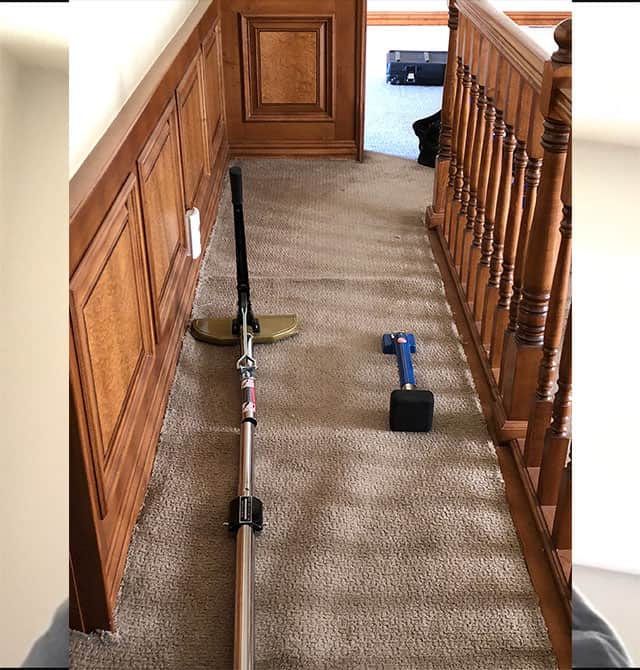
Using a Power Stretcher
Before beginning the wrinkle elimination process, a clear workspace is key. Be sure to remove all furniture from on top of the carpet in question.
Once the tooth depth of the power stretcher has been set to match the carpet pile, it’s time to begin. Starting at the corner of the carpet, locking pliers can be used to pull the carpet from the tack strip that lies along the baseboard along the entire length of the wall.
Position the Power Stretcher
Next, the power stretcher can be positioned along the floor and against the opposite wall of the room using a piece of backing material to protect wall finishes. The head of the stretcher should be about 6 to 8-inches from the wall where the carpet has been pulled up.
The teeth of the power stretcher can then be inserted into the carpet, and the level pulled to stretch the carpet wrinkles smooth. This process should be repeated at 1-foot intervals moving horizontally across the carpet until it’s smooth and even.
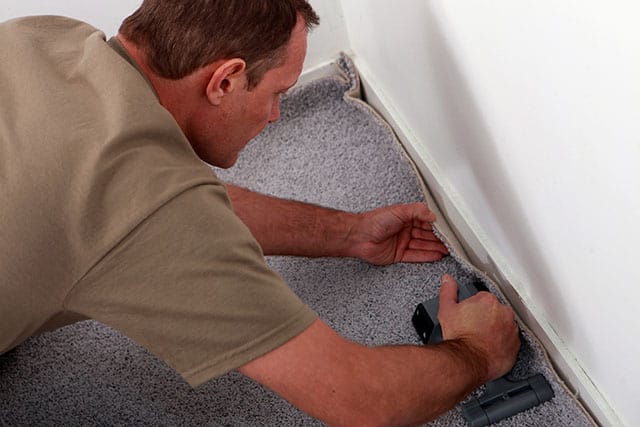
Trim off Excess Carpet
Excess carpeting can be curled up and trimmed away to fit snuggly against the wall. For those that don’t end up with enough excess carpeting to cut, a hook knife can be used to tuck the carpet back into the seam of the wall and attach it to the tack strip.
How to Get Wrinkles Out of Carpet Without a Stretcher
Sometimes, a power stretcher isn’t available, but a carpet wrinkle still needs to be fixed. When this is the case, it’s helpful to turn to a carpet knife and knee kicker. Learning how to get wrinkles out of carpet without a stretcher using these items is key to smooth flooring.
Begin by placing the knee kicker 3 to 4-inches away from the wall. Use your knee to shove the device towards the wall so excess material pops up at the edge.
At this point, a carpet knife can be run along the crease of the wall to remove the extra fabric. Either attach the carpet edge to the tack strip manually or tuck the edges with a hook knife to create a smooth seam.
In Over Your Head? Call the Professionals!
Knowing how to get wrinkles out of carpet on your own can be helpful, but if you find yourself struggling with the process, the carpet repair experts at MSS Cleaning is here for you.
Carpet wrinkles can be frustrating, but our team serving the greater Denver area has the expertise, equipment, and professionalism to make freeing your carpet of wrinkles a seamless process from start to finish. Simply reach out and we’ll be there to give you a hand!
Or Call: 1-720-233-0761

